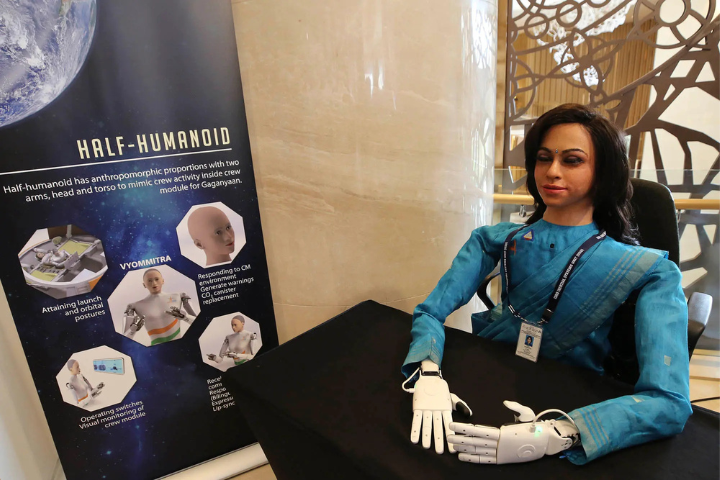The Indian Space Research Organisation (ISRO) has completed the development of a humanoid skull model, a key technology that will be used for the demonstration of the upcoming uncrewed Gaganyaan mission in 2025, featuring Vyommitra, a robot, being sent into space.
Isro’s Ability To Send Astronauts Into Space
Gaganyaan’s objective is to demonstrate Isro’s ability to send astronauts into space. The mission will put three Indian astronauts for three days into space, about 400 km away from the Earth and the spacecraft is scheduled to land back in Indian waters.
Indian PM Narendra Modi revealed the name of the four IAF pilots chosen for the mission including Group Captain Prasanth Balakrishnan Nair, Group Captain Ajit Krishnan, Group Captain Angad Pratap and Wing Commander Shubhanshu Shukla, undergoing training for the last few years.
The Two Precursor Missions
Before the main mission the two precursor missions like Gaganyaan 1 (G1)and Gaganyaan 2 (G2) will be taken up in 2024 and 2025, respectively. As per IndianExpress sources close to Isro, the technology testing for G1 is in its advanced stages, recently and G1, is ready for a launch in December. The primary objective of the mission will be to test the safe re-entry of the crew module and ensure its correct orientation as it descends into the sea.
Whereas the follow-up mission, G2, will involve placing Vyommitra inside a pressurized crew module that carries a life-support environment and the robot will be recording various parameters to assess the flight’s effects on human beings. This half-humanoid model looks like an actual human including features such as the torso, arms, neck and head. It covers a maximum envelope dimension of 200 x 220 mm and weighs around 800 g.
Padma Kumar’s Statement
In a report by IndianExpress, where Padma Kumar E S, director, IISU said “This configuration of the skull is part of the half-humanoid flying in Gaganyaan mission. Ground qualification testing is over. Flight system has been realised and acceptance testing is currently under progress. Future humanoids can have alternative configurations based on mission requirements,”
“The results obtained from this technology demonstration mission would be useful in evaluating the performance of the robotic systems in micro-gravity conditions. Such demonstrations would certainly be useful towards the induction of robotic support elements in activities such as assembly operations of the future Space Missions,” Kumar added.





GIPHY App Key not set. Please check settings